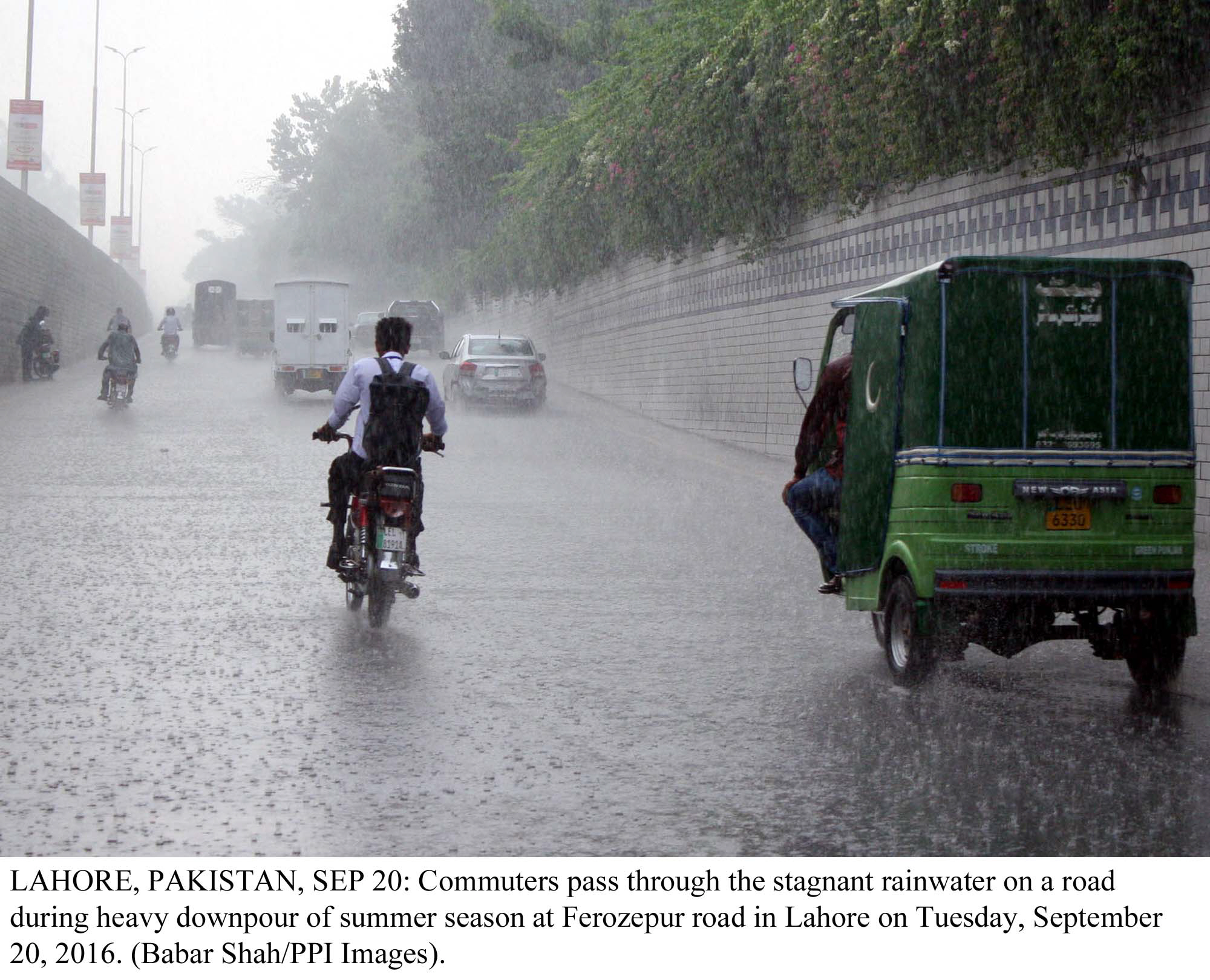
Monsoon rains are the only source of recharging water in the Islamabad aquifer. Due to the extensive construction of buildings, concrete roads and footpaths, rainwater fails to find a way to seep into the ground and is directly streamed into Nullah Leh and other natural streams without being used.
The current population of Islamabad is more than two million and is growing at a rate of 5.7% per year, and it is predicted that it will likely rise to 4.5 million by 2050. The scarcity of water, especially of the potable variety, is one of the major impediments to development of new sectors in Islamabad.
The main sources of water are the reservoirs built at Simly and Khanpur, apart from tube wells installed in different sectors. Previously, the peak accumulative water production from these sources was 84 million gallons per day. It then dropped down to 62 MGD, as compared to the average demand 176 MGD. Water shortage worsens in Islamabad during the summer and water rationing is imposed.

To overcome the shortage, around 200 buildings were selected to launch a water conservation project, which was a joint venture of the Climate Change Division, now Climate Change Ministry, and its attached department Pakistan Environment Protection Agency (EPA) a few years ago. The PC-1 was prepared and submitted to the Planning Commission of Pakistan for approval. However, it was dropped in the fiscal budget for 2014-15. Since then project could not be incorporated in the annual financial layout plans.
“There is a dire need to conserve water as the population increases and water level drops, especially in fast-growing cities like Islamabad. Rainwater harvesting is an effective system of water conservation,” an official of the Ministry of Climate Change told The Express Tribune, requesting anonymity.
The official said though Pakistan was blessed with surface and groundwater resources, the rapid growth in population, unplanned urbanisation and unsustainable water consumption practices had placed immense stress on the quality and quantity of the country’s water resources.
Over 250,000 children die due to waterborne diseases in Pakistan every year, he said. He added most housing societies are extracting water through tube-wells and hand pumps and have to dig deeper every year in search of water due to the dwindling supply.
He suggested that the Capital Development Authority (CDA) and private housing schemes should construct check dams and delay action dams in order to overcome the growing problem of water scarcity by developing their own resources.
“Check dams and delay action dams collect surplus rainwater which can later be used to recharge the subsurface water when needed, and these are ideal for rugged terrains and aquifers,” he said.
The official pointed out that rainwater harvest is being utilised as a source of conservation internationally, while some countries, like India, also use rainwater for irrigation.
Published in The Express Tribune, September 21st, 2016.

1730360426-0/Menendez-Brothers-(2)1730360426-0-165x106.webp)
1732534556-0/taylor-(14)1732534556-0-165x106.webp)
1725872216-0/Tribune-Pic-(3)1725872216-0-165x106.webp)
1732532771-0/BeFunky-collage-(89)1732532771-0-165x106.webp)
1732530440-5/Copy-of-Untitled-(85)1732530440-5-270x192.webp)

1732534225-0/Express-Tribune-(13)1732534225-0-270x192.webp)


1732529980-0/Copy-of-Untitled-(84)1732529980-0-270x192.webp)






COMMENTS
Comments are moderated and generally will be posted if they are on-topic and not abusive.
For more information, please see our Comments FAQ